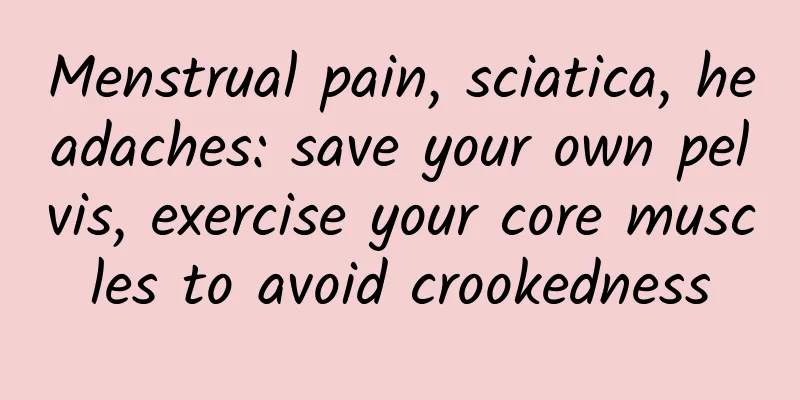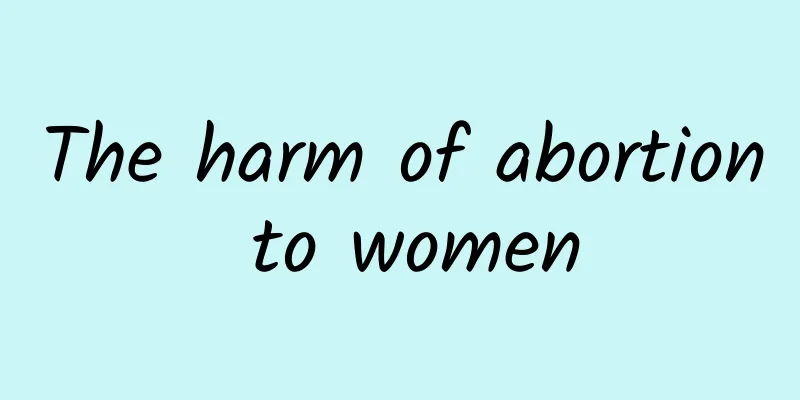Menstrual pain, sciatica, headaches: save your own pelvis, exercise your core muscles to avoid crookedness

|
Save your own pelvis! Return your pelvis to its original position and eliminate any discomfort! Sciatica, menstrual pain, headaches, stiff shoulders and neck, constipation, abdominal obesity...it turns out that they are all related to pelvic deviation. Whether it is physical or mental health, the pelvis is our center because the pelvis connects six fascia lines with various muscles, the nervous system, and the six major chakras, all of which are activated from here. Only by exercising the core muscles to straighten the pelvis and avoid tilting can you activate the self-healing power and stay away from the troubles of diseases and discomfort! The pelvis is the center that controls physical and mental health! Returning the pelvis to its normal position activates the self-healing ability Chiropractic medicine emphasizes the theory of balance. This balance includes not only the balance between body, mind and spirit, but also the harmonious and balanced operation of various systems such as the spine, pelvis, muscles, bones, fascia, and nerve conduction. When the body is in a state of balance and harmony, each organ can function efficiently and normally, and our emotions and body will be comfortable and pleasant; but when it is out of balance, we will feel pain or emotional changes. Wang Yuxuan, a body-mind healing yogi, said in his new book "Pelvic Alignment: Exercises to Heal the Body and Mind" that it is worth noting that the human body has a set of regenerative abilities that allow it to heal itself without the need for drugs. All the secrets are hidden in our pelvis. The pelvis is the root of survival and the basis of life. The human pelvis is of great structural, functional, and emotional importance. The pelvis in anatomy is Pelvis, which means washbasin or basin in Latin. The pelvis is like a basin. Its main function is to hold our internal organs, including the intestines, uterus, ovaries, etc. The structure of the pelvis: connected to the spine at the top and to the thigh bone at the bottom through the hip joint In addition, the position and mobility of the pelvis are also important factors that affect our posture. The pelvis is an important part in maintaining the balance between the torso and limbs. The pelvis, located in the middle of the body, is the hub between the upper and lower body. It must bear the weight of the upper body and spine, and transfer these forces to the legs. Similarly, it must also transfer the reaction force of the ground from the legs to the spine. Because of this, pelvic stability is very important for physical and mental balance. The structure of the pelvis is composed of two hip bones, the sacrum, and the coccyx. It is connected to the spine upwards and to the thigh bone through the hip joint downwards. Pelvic stability is very important for physical and mental balance. After understanding the importance of the pelvis, let’s take a look at the important muscle groups of the pelvic floor and why it is important to exercise these muscle groups, especially the core muscle groups. The pelvic floor muscle group is divided into 3 parts: 1. Deep pelvic diaphragm: It is composed of the levator ani muscle and the coccygeal muscles on both sides, and it covers the pelvic floor in a funnel shape. 2. Superficial urogenital diaphragm: Further below the pelvic diaphragm (superficial), it extends from the ischial tuberosities on both sides of the pubic symphysis in front to form a triangular diaphragm. 3. Sphincter/erectile muscles: muscles that control the urogenital organs. To stabilize the pelvis, the core muscles and muscles in all parts of the body must be trained more. In order to achieve pelvic stability, in addition to the strength of the internal and external muscle groups, the hip adductor muscles connected to the pelvis, the back muscles and the abdominal muscles related to the pelvis, such as the rectus abdominis, quadratus lumborum, internal and external oblique muscles and transverse abdominal muscles, are also related to the stability of the pelvis. Therefore, in order to stabilize the pelvis, the core muscles and muscles in various parts of the body must be trained more. The following are the 5 parts of the core muscles: [The core muscle group consists of 5 parts]: ① Abdominal muscles: deep transverse abdominal muscles (stabilizing muscles), rectus abdominis, internal and external oblique muscles. ② Back muscles: multifidus (stabilizing muscles), latissimus dorsi, and quadratus lumborum. ③ Diaphragm: The diaphragm is the respiratory muscle group, so the secret to activating the core muscles lies in breathing. ④Pelvic floor muscles. ⑤The leg muscle groups connecting the pelvis and lower limbs. [Dynamic stretch to straighten the pelvis] Returning the pelvis to the basics: Activating the root chakra The fundamental basis of pelvic alignment is to activate the root chakra, one of the energy centers in Indian yoga. The root chakra is the lowest of the seven chakras and is also the most basic chakra, located between our buttocks and genitals. It controls the lower limbs and legs and provides the body with the most basic energy. The root chakra physiologically affects the leg muscles, bones, and reproductive ability; psychologically, it also affects our sense of security and existence. Recommended essential oil energies include: ginger, cedar, juniper, etc., and aromatic essential oil meditation can be performed. The lower abdominal chakra is directly related to our fertility, lower back and hips, bladder, kidneys, ovaries, and testicles. In charge of vitality and reproductive system: lower abdominal chakra, reproductive chakra The lower abdominal chakra physiologically affects our reproductive system, urinary system, sacral nervous system, adrenal glands and gonads. The lower abdominal chakra is located in the center of the body. It is the location of the Dantian (located between the navel and the Mingmen acupoint) in the Taoist school of Chinese philosophy. It is directly related to our fertility, lower back and hips, bladder, kidneys, ovaries and testicles. The lower abdominal chakra is the starting point of the Du meridian (Changqiang point), and is also related to our Foot Shaoyin Kidney Meridian and Foot Taiyang Bladder Meridian. An imbalance in the lower abdominal chakra can cause back pain, sciatica, low libido, pelvic pain, menstrual problems, etc. Recommended essential oil energies include: clary sage, ylang ylang, palmarosa, jasmine, rose, and ladies' blend. Action 1: Loving Yourself Back and Forth Effect: Improve physiological pain (Photo provided by Happiness Culture) (Photo provided by Happiness Culture) Action 2: Frog Jumping Effect: Improve gynecological diseases (Photo provided by Happiness Culture) (Photo provided by Happiness Culture) |
Recommend
What are the types of ovarian cysts?
What are ovarian cysts and what types are there? ...
What kind of care should be done after painless abortion?
Painless abortion is one of the abortion methods,...
The clinical manifestations of irregular menstruation are explained to you one by one
What are the clinical manifestations of irregular...
Will wearing braces make you thinner? 5 dietary tips to avoid obesity
Will I lose weight if I wear braces? This is a qu...
A brief discussion on the treatment of irregular menstruation
Menstrual irregularities include changes in the c...
The dangers and treatment of vulvar leukoplakia
Vulvar leukoplakia will cause obvious itching and...
What is cervical hypertrophy? Does it need treatment?
Cervical hypertrophy refers to the hyperplasia an...
Early warning signs of ectopic pregnancy
Ectopic pregnancy is a dangerous gynecological em...
What are the precautions for dietary conditioning of dysmenorrhea?
What are the precautions for dietary conditioning...
Is there a genetic tendency for irregular menstruation?
Is there a genetic tendency for irregular menstru...
How to treat irregular menstruation? Women with irregular menstruation should treat it like this
Menstruation is something that every woman should...
Key points for diagnosis of threatened abortion
What are the key points for diagnosing threatened...
Can women with amenorrhea take Buzhong Yiqi Pills?
Women with amenorrhea need to clarify the cause o...
Papaya stabilizes blood sugar and helps lose weight! Nutritionist Cai Yixuan: Eating at this time will double the effect
Papaya, once rated as the most nutritious fruit b...
The second unbeatable weight loss trick: 6 kinds of food to reduce absorption
Love delicious food but afraid of getting fat? Th...









